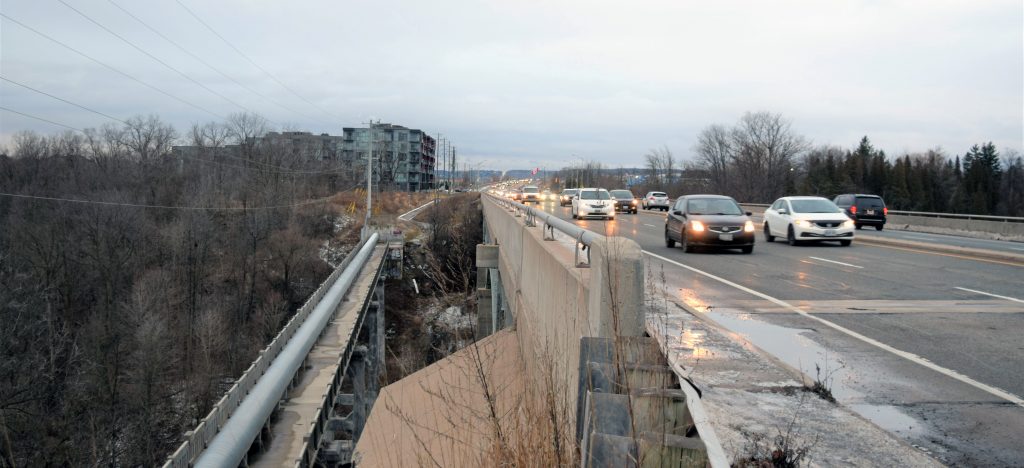The Region of Halton west of Toronto has aggressive new infrastructure plans to accommodate continuing explosive population growth in the next decade says the regional government’s director of engineering and construction.
Marek Braczek laid out the Region’s fully costed five-year $1.5-billion infrastructure plan during a presentation at the Hamilton-Halton Construction Association’s (HHCA) Construction Forecast 2020 event held in Hamilton, Ont. Jan. 23.
He told HHCA members the region’s population is expected to reach 820,000 in 2031, up 47 per cent from 2016, with Milton doubling in size to reach 249,000 during that period.
“In terms of providing infrastructure that will support that growth, our plan is quite extensive,” said Braczek in an interview. “It’s elaborate, it’s an aggressive plan but I believe we are in a position to deliver the infrastructure on time and to meet those projections set out by the province.”
Halton Region council approved the five-year plan in November.
Sue Ramsay, HHCA general manager, commented, “The amount of work they have is mind-blowing. They are a really progressive jurisdiction, they are looking at where they are and where they are going to be and how they are going to serve those people and there is nothing more positive than that.”
The significant price tags associated with major road projects — the widening of parts of Britannia Road to six lanes in three phases at a cost of about $80 million, continuing work on the William Halton Parkway valued at $115 million, and another $100 million to be spent widening a section of Dundas Road — reflect the fact that each of the roadways run east-west and cross major waterways, requiring bridges.
Besides those three road projects and another project requiring a bridge, the Steeles Avenue CN Rail Crossing budgeted to cost $15 million, the Region also has plans for the east-west Wyecroft Road extension between Oakville and Burlington in south Halton that will also require a new bridge. That will come later in the five-year period with the design phase now underway.
The five-year new roadway plan is valued at $956 million.
We needed special requirements for contractors to ensure the success of these projects,
— Marek Braczek
Regional Municipality of Halton
The water and wastewater projects the Region have planned for the next five year also reflect the distinct geography of the region. Burlington and Oakville are serviced by lake water, as is Milton to the north. But Georgetown, in Halton Hills, relies on groundwater and planners have determined its growth must be capped until expensive lake-water systems are put in place. Thus, the five-year plan calls for $194 million to be spent on new water infrastructure, including three separate watermains and a new pumping station in Ashgrove, and wastewater infrastructure that will cost $295 million.
Pre-qualification has closed for phase two of the Britannia Road job, phase two of the William Halton Parkway build and the Dundas job, with tendering going out in the second quarter of this year in each case.
Tendering for phase three of the Britannia project goes out in the third quarter of 2020.
“We needed special requirements for contractors to ensure the success of these projects and the intricacies of those projects,” Braczek commented, explaining the need for prequalification for the large jobs.
In addition to the growth-related infrastructure budget, there is also major state-of-good-repair work budgeted for, Braczek noted.
The engineer also outlined Halton Region’s unique funding scheme for the five-year growth plan that enables certainty in project forecasts. The Region sells single detached equivalents (SDEs) to developers that confer the right to build new communities.
“The allocation program is both a financing tool and a growth-management tool,” Braczek said.
“We release a certain amount of SDEs through different phases of an allocation program to ensure there is continuing financing for the actual infrastructure that is going to be built by the Region.”
The program ensures that contractors, subs and trades can budget and plan resources for the next half-decade with confidence, Ramsay noted.
“Every construction company’s dream is consistent, long-term, stable funding,” she said.
A December 2017 report to regional council documented 19,329 SDEs that had been allotted for the region — 10,997 for Milton, 4,837 for Oakville, 3,000 for Halton Hills and 495 for Burlington.
Follow Don Wall on Twitter @DonWall_DCN.











we need more roads and go train access or we will be screwed in gridlock traffic which will drive the house prices down and crime up!!!
Look at Orangeville, from Mississauga, in two years , putting in the stupid HOV lane which made the 410 north a parking lot because there is no way for people to get off at Steeles and Queen unless you stop traffic. The commute home has gone from 50 minutes at 5 p.m. leaving Mississauga at Derry Road and 410 north is now 1 hour 10 minutes to 1 hour 30 mins. In one year that’s 180 hrs hours extra commuting time in good weather!!! God forbids if it snows or rains, it’s over two hours to drive one way, that’s a lot of pollution and wasted money even if its a cheaper home to own.